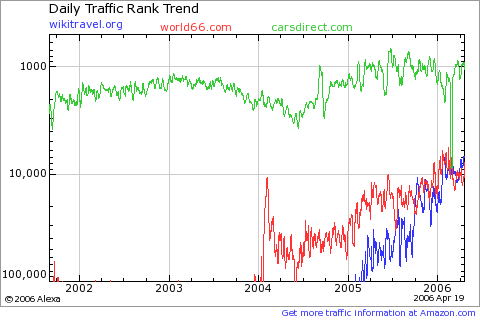I attended the Fourth Calorie Restriction Society Conference after missing CR III. Comments on most of the presentations:
Conference co-organizer Robert Krikorian said he thought attendees expected less from calorie restriction, at least in terms of life extension, than did attendees at the first conference, held in 2001.
Donald Laub spoke about a small study in which overweight asthma patients practiced approximately “every other day” CR — ad libitum one day, 20% of energy requirements the next — amounting to approximately 20% CR. Onset of presumably CR-induced benefits — objective and subjective measures of asthma symptoms, oxidative stress and inflammation markers — was drastic and rapid, largely kicking in after only a few weeks. Laub is also researching an unintentional human CR study from 1956 by Arias Vallejo in which 60 restricted patients in a Madrid nursing home had about half of the hospitalization days of the 60 control patients. Only half as many restricted patients as controls died over the course of the study. Laub said the mortality numbers were too small to be significant (I believe 12 and 5 deaths) but he did not let this stop him from extrapolating a mortality curve for the restricted patients shifted to the right.
Josh Mitteldorf claimed that aging is a result of group selection to check population growth that would deplete resources and lead to extinction. He admitted to holding a minority position and offered critiques of three theories of aging. Mitteldorf thinks that the CR effect falsifies disposable soma, which he thinks should predict that more energy would allow for more damage repair and less aging rather than the opposite. I suspect he is attacking a strawman version of the theory. He claimed that the existence of genes that seem to have no purpose but programmed death and telomere shortening to rule out antagonistic pleiotropy and mutation accumulation as primary causes of aging. Certainly these theories can be criticized, but Mitteldorf’s own probably goes down the wrong track by relying on group selection, which may not even exist is somewhat controversial. He invokes the dynamism of exponentially growing then crashing populations. It seems to me (i.e., completely uninformed speculation) a changing environment might favor genes for aging to free resources for new generations, which might have mutations enabling survival in changed conditions — this would be mere kin selection. Mitteldorf said the existence of programmed death would make life extension easier — single interventions could have powerful cascade effects — and that indeed, CR may be an example of such an intervention.
Luigi Fontana gave an update on human CR studies in progress that show CR practicioners have extremely low markers for cancer and heart disease risk and noted one study in which raw foodists had markers in some (but not all) areas as good as CR practicioners suggests that protein restriction may be something to study. This doesn’t seem to be of much practical use given a CR concern with maintaining muscle mass nor does it seem to be a likely effect to me — the raw foodists consumed calories closer to the CR group than to the exerciser and control groups — presumably this accounts for most or all of their CR-like markers.
Aubrey de Grey suggested that the CR effect is mostly absolute and will not effectively scale for long lived organisms due to famines lasting a similar amount of time for organisms regardless of lifespan, resulting in only two or three years’ increase in life span for CR’d humans. I highly doubt multi-decade famines never happen, though perhaps they do not occur often enough to favor genes conferring equivalent life extension. Certainly the CR effect is much greater proportionately in shorter lived organisms — de Grey cited examples ranging from several hundred percent for C. elegans to a 40% for some mice to a few percent for Okinawans. He also spoke a bit about SENS, about which I’ve written previously.
Caleb Finch‘s talk on meat-adaptive genes in the evolution of the human diet was fascinating. If I understood correctly, some of the same genes that offer protection from the dangers of eating raw meat (parasites, prions, high iron doses) also indicate larger brain size, specifically APOE. With the exception of some chimpanzees (and of course humans), existing hominids only eat plants and some insects, so this gene is not present. Some groups of chimpanzees do hunt and practice cannibalism, but this is cultural and could have even been transferred from humans. Although little recognized, Alzheimer’s occurs in many mammals. APOE also protects against Alzheimer’s. About ten percent of humans have an APOE variant that results in decreased lifespan (about half of the female-male difference) but better protection against certain diseases.
Steven Austad said that although the CR effect is often assumed to be ubiquitous many studies have shown exceptions, even in rodents. Although some of his examples are questionable, clearly the effect of CR on an organism should not be assumed to be always positive. I (because I am ignorant) found his clear description of what CR means in the context of single cell organism and fruit fly studies valuable — especially for the former, it isn’t very similar to CR for mammals. I have a fair amount of raw notes taken from this presentation which I may eventually turn into a separate post.
Three later presentations, the scientific panel, and general observations in a subsequent post.
The conference was written about in the local (Tucson) paper. Probably the two best known bloggers writing about their own CR practices, Mary Robinson and April Smith, each have posted about the conference and will presumably be posting additional thoughts.

